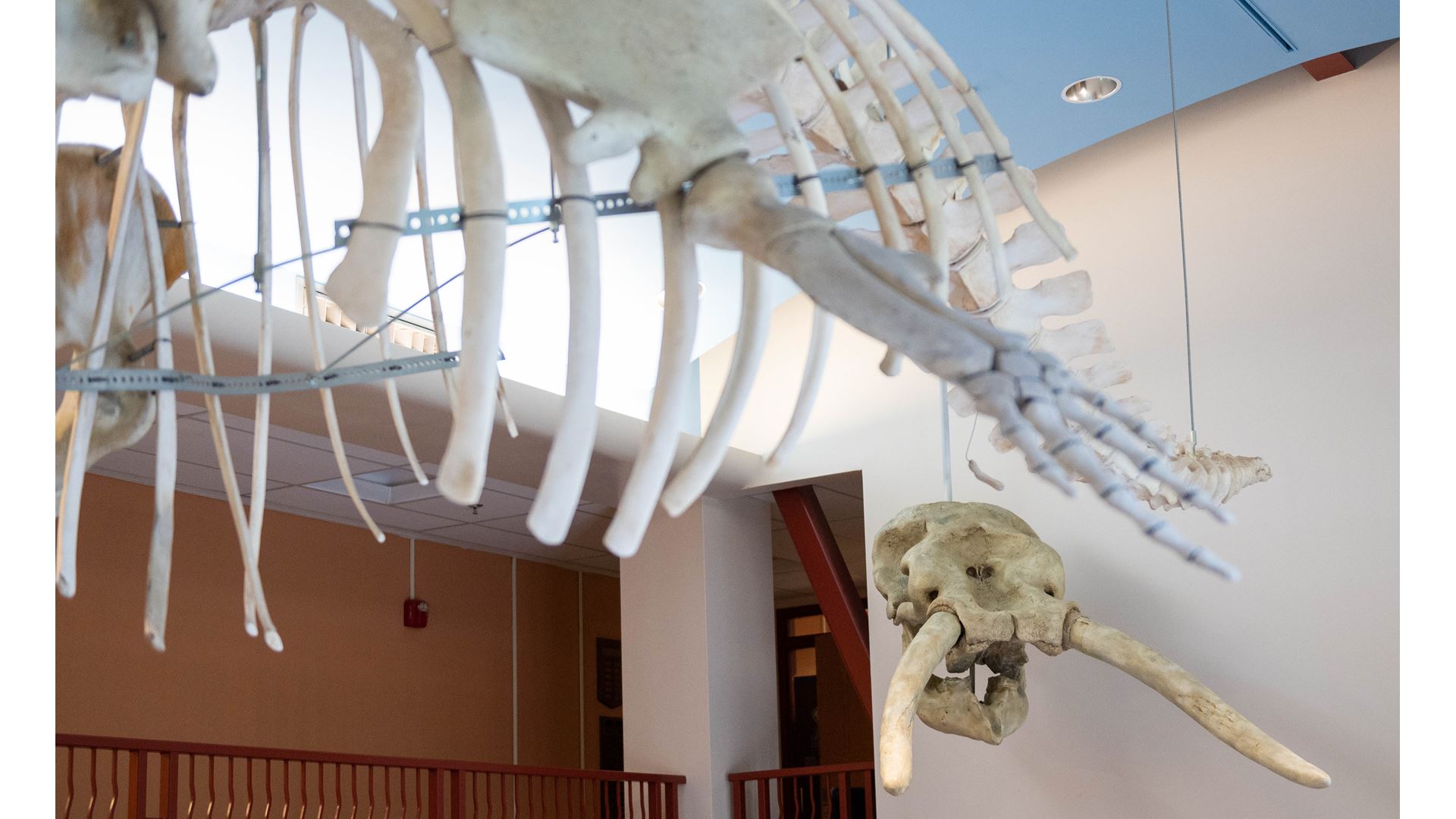What was once thousands of pieces of bones and tusk has taken shape at New Mexico State University in the form of an eight-foot fossil skull of an elephant-like animal known as a gomphothere. The rare specimen of the ancient creature found near Las Cruces was recently hung from the vaulted ceiling in Foster Hall.
“It is one of fewer than a half-dozen of skulls of this species ever found, all of which were found in Bolivia nearly a century ago. It is the best preserved among all,” said Peter Houde, biology professor and curator of NMSU’s Vertebrate Museum. “It is also important that the specimen is available for the public to see here in Las Cruces, where it was found, and because it is a vehicle through which we can teach biological concepts.”
Houde will give a virtual talk about the creature and other ice age giants in the Las Cruces area as well as and the painstaking, 10-year reconstruction process he went through to bring the fossil together at 4 p.m. Thursday, Sept. 9, via Zoom teleconference at https://nmsu.zoom.us/j/92454221646, passcode: 364646.
“Peter reassembled this skull from thousands of fragments, on his own time,” said Brad Shuster, professor and biology department head in the College of Arts and Sciences. “It was a true labor of love.”
In addition to preserving the bones, a support frame had to be welded together before the enormous skull could be ready for display.
“It was a giant three-dimensional jigsaw puzzle,” Houde said. “It required detailed knowledge of anatomy and referral to other specimens of elephants and mammoths for comparison. There were additional preservation and structural technicalities to address.”
The skull’s journey to NMSU began in August 2010, when Houde received a call from NMSU alumnus Eddie Binns, who discovered the skull at his quarry near Mesquite. Houde spent three weeks carefully uncovering the skull from a mining pit with the help of then undergraduate student Drew Gentry, who has since graduated from NMSU, received his Ph.D. in paleontology and is now a research associate at the University of Alabama.
The gomphothere found at Binns’ quarry would have resembled a modern elephant, with stubby legs and straight but spiraling tusks, but these animals are distinct from elephants by the shape of their low-crowned molars, which are adapted for consuming a mixed diet of grasses, leaves and fruits.
“There are very few complete specimens of cuvieronius gomphothere skulls anywhere, so it is an important contribution to our understanding of these ancestral relatives of elephants,” said Shuster. “Additionally, finds of this quality are often swept up and taken to regional or national collections and museums. What makes this specimen special is that not only was it found in the area, but was excavated, reassembled and now displayed locally.”
Binns, who graduated from NMSU in 1957 with a degree in civil engineering, donated the skull to NMSU so it could be available for people in the area to see. Houde explained another well-known NMSU alumnus Michael “Mike” Johnson, reached out to cover the costs of reconstruction and welding as well as mounting the skull for display.
“We’re grateful to both of our Aggie alumni,” said Enrico Pontelli, dean of the College of Arts and Sciences. “We didn’t ask for it. Each of them reached out to us help make sure this discovery could stay here in the Las Cruces area and be displayed properly for the public.”
The gomphothere skull joins a whale skeleton on exhibit in the south entrance of Foster Hall.
NMSU’s Vertebrate Museum, located in Foster Hall, houses 26,000 specimens of mammals, birds, reptiles and amphibians, and serves as a center for research and education for both scientists and students.

